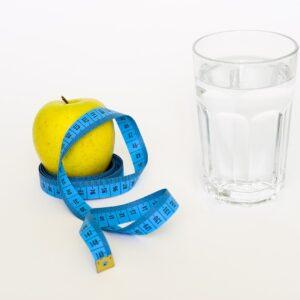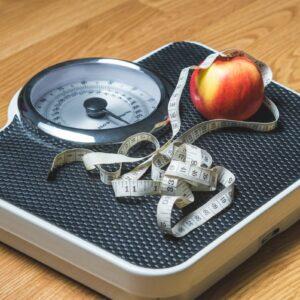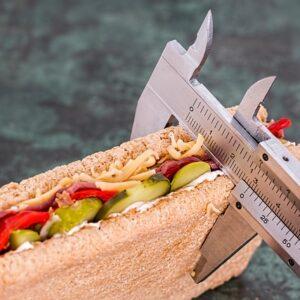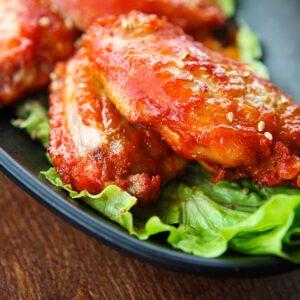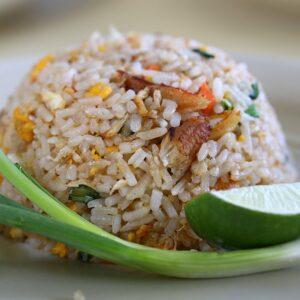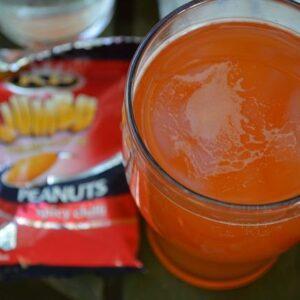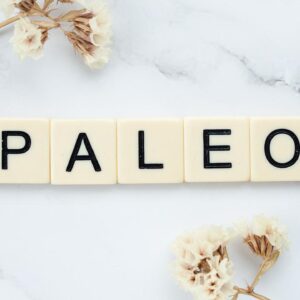How to Explain Ketogenic Diet to Your Mom?
The Ketogenic Diet Menu Plan that many people follow nowadays were dietary lifestyle that cuts down sugar and high-carb diets in order to increase the levels of ketones.
Ketosis is a proven and well-known low carb diet, which prevents carbohydrates from being converted into sugar and creates ketones to be used as energy.
There are a lot of different names for this type of diet, but in essence it is a low carb, high fat diet that makes the body use fat as its main energy source.
However, there are others out there, so for this write-up we’ll keep to the standards of Keto.
When we consume carbohydrates, we’ll produce glucose in our body. This will make our pancreas release insulin to control the level of glucose in our bloodstream.
Glucose is the body’s preferred source of energy and will be used before any other energy source. This is because glucose can move through the bloodstream to the brain and muscles very quickly without requiring any additional enzymes.
Insulin is a hormone that was produced by the cells in the pancreas. It is responsible for processing the glucose in our bloodstream, by taking it around the body. This process helps to regulate blood sugar levels.
The body needs glucose (sugar) to stay energized. When we consume carbohydrates, our pancreas releases insulin to help our cells use the glucose for energy. This leaves less glucose for other actions in the body, so the body starts storing fat for energy instead.
Glucose is a simple sugar molecule that comes from carbohydrates. Carbohydrates are broken down into glucose through digestion, and excess glucose was stored in the liver and muscles for later use. Limiting carbs can help induce ketosis.
Ketosis in Simple Term
The body metabolizes ketones regardless of the number of carbs a person eats. The brains, heart, and muscles all prefer to use these for fuel when they’re available. It can break down different types of diet like carbs or protein into the fuels when it needs.
Carbs, fats and proteins were needed to be processed in the body before their respective use. Low-carb diets increase the production of ketones. This occurs through a natural, safe process called Ketosis.
When we eat foods that contain carbs or protein in excess, our body will turn this into sugar in our blood called glucose. Why? To power our body and keep it functioning for daily activities, our cells need some sort of fuel. It can be changed into ATP (an energy molecule).
Our body uses a lot of energy in the day, so fuel up with healthy snacks or a healthy dinner before anyone head out to maximize your productivity and enjoyment.
It’s true that when we consume a meal, much of the nutrients were used up by our body for things like keeping our blood sugar stable and keeping us energized. Eating too much food may result in an excess of glucose that will likely be stored in the body.
There are three ways glucose can be used by the body. If the body doesn’t need it, for example, if we’ve just eaten a meal, it will be converted into glycogen. If the body needs glucose but can’t use it right away, for example when we exercise, it will be converted into lactic acid which is the substance that causes muscle soreness and fatigue.
Glycogenesis and Lipogenesis
Glycogenesis and Lipogenesis are two metabolic pathways that have a relationship with one another.
They contribute to the conversion of glucose and fatty acids into glycogen and triglycerides, respectively. Glycogenesis is a process that converts excess carbohydrates into glycogen, a starch-like molecule that can be stored in the liver and muscles for later use.
Lipogenesis is the process by which lipids are synthesized from acetyl-CoA derived from breaking down fats in order to utilize them for energy or store them in adipose tissue.
In simple term, Glycogenesis is when we eat more carbs than they need, our body will turn these into glycogen and store them in their muscles and liver. We only store about half of our daily energy intake as glycogen, according to report. Lipogenesis is whenever we eat more carbs than necessary, any unnecessary glucose is stored as fat.
Our body needs glucose in order to function. Once our glucose runs out, unpleasant symptoms become noticeable, such as muscle aches, low energy levels or headaches.
While we’re sleeping our body will look for other sources of energy. These will be in the form of ketones: tiny parts of fat which break down and provide the body with energy.
The Ketogenic diet menu plan is typically involving a reduction in carbohydrates. This means our body starts to burn fat instead of carbs for energy. Our bodies are able to switch energy pathways in times of need and thanks to that we can survive.
Fatty acids were turned into ketones when body fat was metabolized and burned off. In this process, ketones are produced that provide muscles and the brain with a source of energy. Although we don’t have any food or carbs, the brain is still able to use ketones from fats for energy.
Research has shown that the body and brain work better on a diet rich in ketones, being able to handle 70% more efficiently than when there is a diet reliant on glucose. Evolutionarily speaking, this makes perfect sense.
How Does Ketosis Actually Work?
When we eat fat, the liver breaks it down and turns it into glycerol and fatty acid molecules. And then the fatty acid is broken down, it enters a state of ketosis and transforms into acetoacetate, which can then be broken down into protein.
Beta-hydroxybutyrate (BHB) – Over time, our muscles will rely more on fat instead of glucose for energy. This means they’ll turn acetoacetate into BHB which was our preferred brain fuel and has similar benefits as ketones.
Acetone – Ketogenic dieters can sometimes turn their fat into glucose, but that can be excreted as waste. This gives the distinct “smelly breath” that those on a Ketogenic diet will be noticed.
After a while, our body will produce less ketones and we may think that ketosis has been delayed. This is not true; our brain runs on ketones and body main goal is to make energy as efficient as possible. That is prioritizes survival mechanisms, like forcing us to sleep when we have nothing better to do.
What’s On Your Plate?
A Keto diet typically starts with dieters eating around 20-30g of net carbs per day.
We could be wondering what a net carb is. It’s pretty easy to understand! Total carbohydrates minus dietary fiber equals net carbs. Take 1 cup of broccoli for this equation. Let say there are 6g carbs, 2g fiber in 1 cup.
Therefore, let’s take our 6g carbs and subtract the 2g dietary fiber. We’ll end up with 4g net carbs.
How Ketosis Benefits Us?
- Hunger. Fats cause more feelings of fullness, meaning we can avoid overeating and avoid hunger.
- Weight Loss. When our body in a fast, it’ll use the fat cells as energy.
- Cholesterol. A Keto diet has shown to improve triglyceride levels that are associated with arterial buildup.
- Energy. Eating more healthy fats in the day will be less reliant on sugars. Fat’s been in the limelight for a while now and it appears that there’s another reason to eat more of it.
- Blood Sugar. The research shows how low-density lipoprotein cholesterol is slowly decreasing over time, which is beneficial for health. It also helps combat factors that are related to type 2 diabetes, among other diseases.
Related: Diet to Lose Weight Fast
Get Ready Before You On Keto Diet
There are many benefits to start a Ketogenic diet, but it can be difficult to get into. The first thing we should do before starting is to consult our doctor. They will provide us with the necessary guidance and help us determine whether or not this lifestyle change is right for us. It’s also important to understand how this diet works before jumping in.
If someone are looking to increase calories, fat is the best choice. Simply eat more of it. For example: Canola oil, Sunflower oil, seeds, nuts, and butter are great sources of healthy fats and often overlooked. Add them to your everyday diet for more of the things you love without packing on all the extra calories.
You can make healthy salads by adding one or more of these toppings: – Avocado – Almonds – Sliced Olives – Chopped Walnuts. By lower down your calories, you should pay close attention to what you’re eating.
As you age, your metabolism slows down and protein decreases. So, take the portions of food into consideration before you make your selection. You can decrease them at any time. Finally, the last thing you should do to succeed is following your diet. Ketosis is a process that happens in the body to make you more insulin sensitive.
Perhaps the more important goal is to not just get more calories in your body, but to make sure what you eat actually makes you feel satisfied and satiated. So, make sure to eat until you know that you can’t physically take in any more food! This will reduce the chance of overeating and help prevent cravings.
Humans are not robots. If we’re making an effort to eat something when it doesn’t taste good at all, that will never workout in the end. There are so many possibilities for what you can eat. Check out down below Keto Recipes videos that might suit your taste!
Click Here to Watch More Custom Keto Plan.
Week 1
As our goal is to keep this simple at first, there’s not much to explain right now. Try to avoid processed foods when possible and avoid sugar. It’s not always easy to leave the kitchen, so use these tips for making this process smoother.
Consider some leftover food. Doesn’t it make sense to make one healthy, delicious meal and eat it two – three times a day? I like to make my breakfast on the fly, on days where I’m short on time.
It’s something I know I can handle without having to stress or worry about getting it done first thing in the morning. You should grab some food that’s already made for you, then just head out the door. That couldn’t be much easier, could it?
The first Keto flu was characterized by mental fuzziness, headaches, and fatigue. It does not last long with time though. Drink plenty of water and eat plenty of salt to stay healthy. “Going Keto” might make you really need to pee more, but the end result is worth it.
When you take into account that you are peeing out electrolytes, it would be reasonable to assume that you will have a headache soon. Drinks lots of water, drink to thirst, and eat foods high in salt. Doing this should help with your headaches. They might even go away completely.
Adding a little bit of salt to water and drinking it can help you feel better if you’re feeling rundown or thirsty.
Just drink plenty of water and eat a lot of salt, which will help to avoid any side effects.
If you’re concerned about high blood pressure while consuming too much salt, don’t worry- their connection is often overstated. However, you should always consult your doctor before doing so.
Ketogenic Diet Menu Plan With Recipes
Breakfast. For breakfast, make something quick and easy like low carb Keto pancakes or smoothie bowls. You can batch cook these in large batches and store them in the freezer for a few weeks worth of instant breakfasts. The first week is all about getting your code to work no matter how simple it is. This way, you can make enough to last a whole week. I am too lazy to make breakfast before work – nobody wants to!
Lunch. Here too, we’re going to keep things simple. Many eat salads for lunch, with some meat and a dressing. Leftover meat from the last night or canned chicken/fish are both quick and easy options. Choosing canned meats that are natural and organic will offer you quality products. If you can, avoid those with a multitude of additives.
You can also experiment with spices and seasonings to make your salad tasty! Generally, spices with small amounts of carbohydrates can be consumed when on Keto. However, make sure to proceed with caution if you are using onion or garlic powders.
You might have noticed that many recipes call for onion and garlic powders. However, these are not Keto-friendly. These two spices are high in carbs and should be eat less on a Keto-diet.
Dinner. I’m gonna make dinner with some green veggies, meat, and fruit. Let’s go with a high-fat and moderate-protein option this time.

